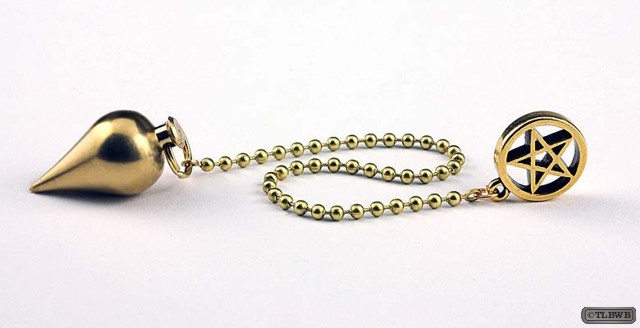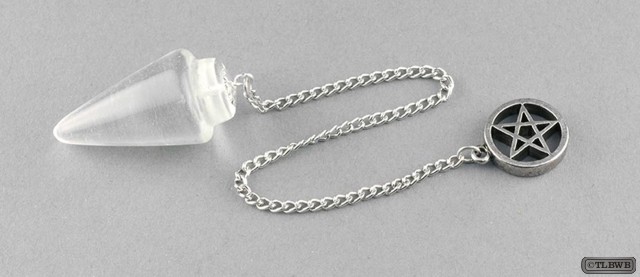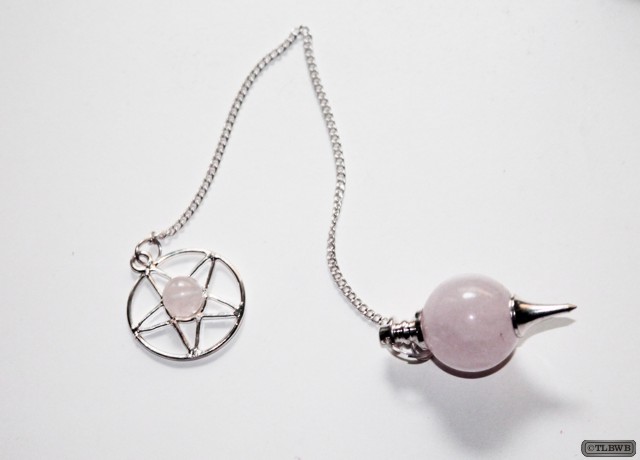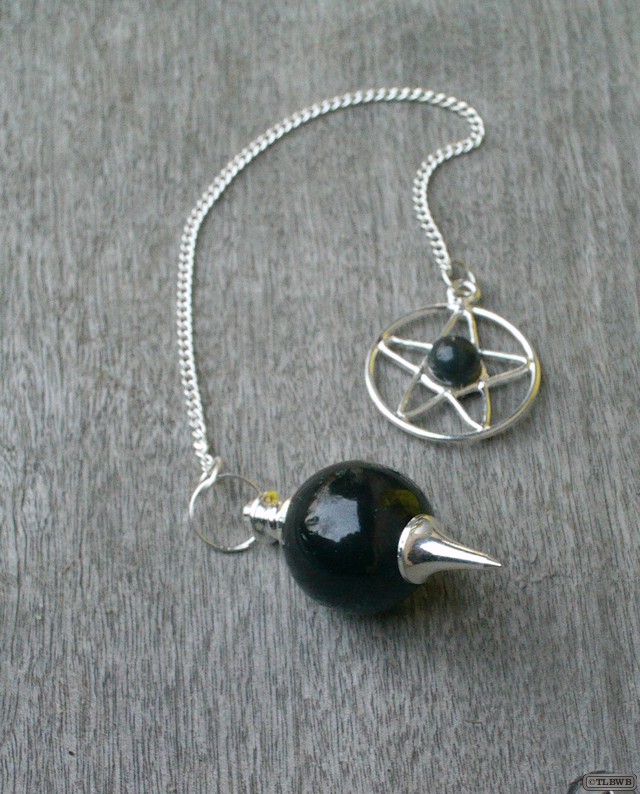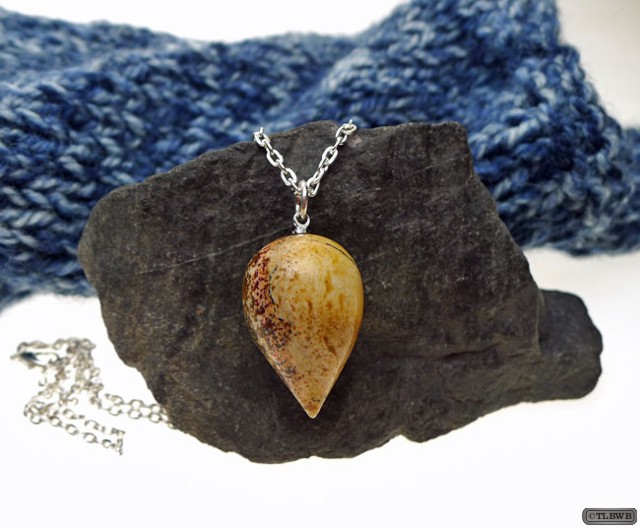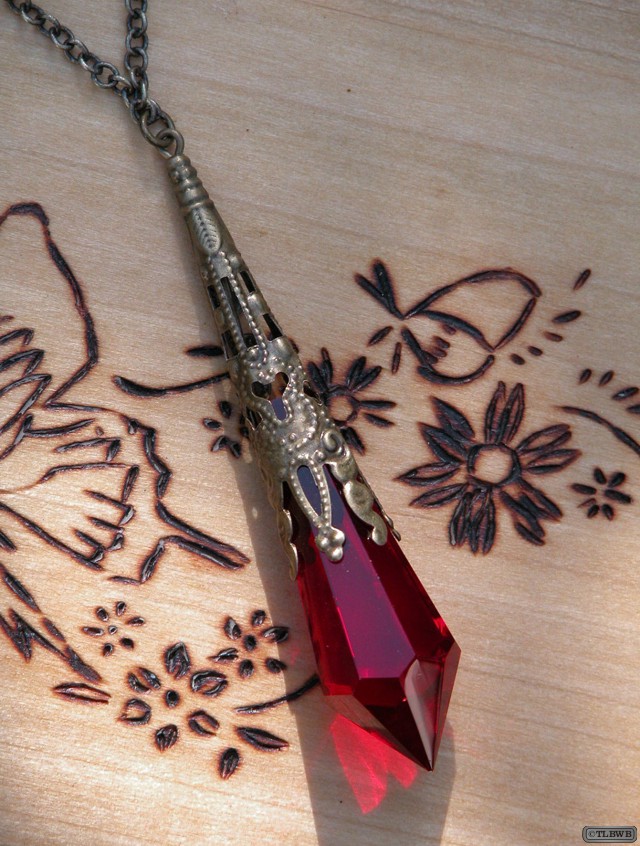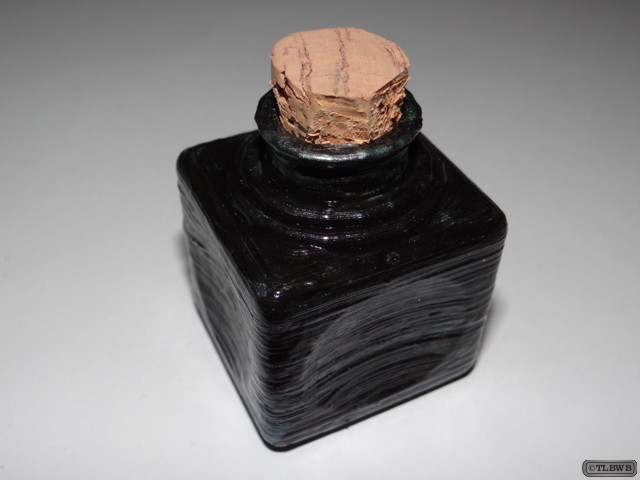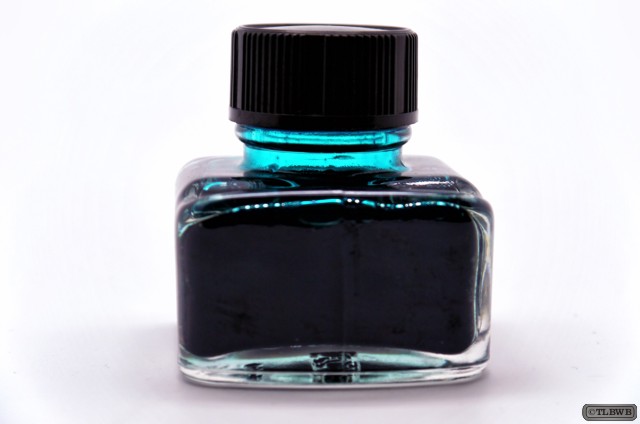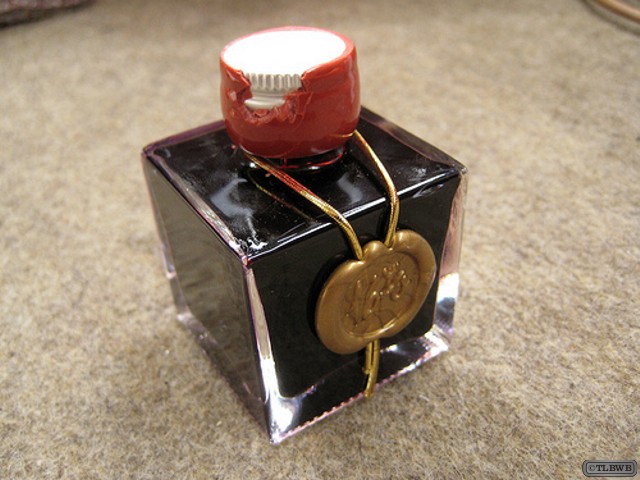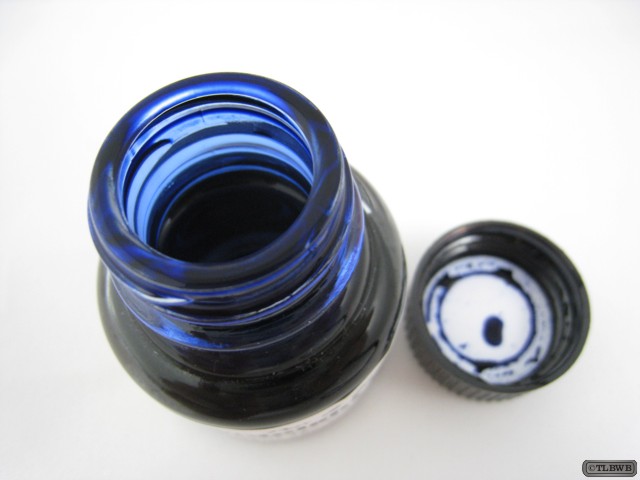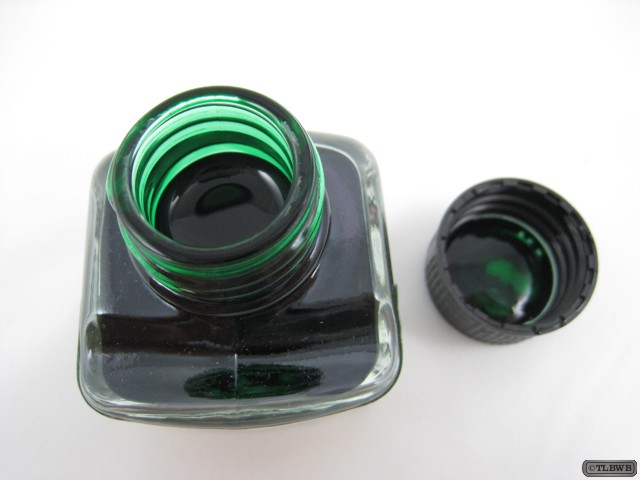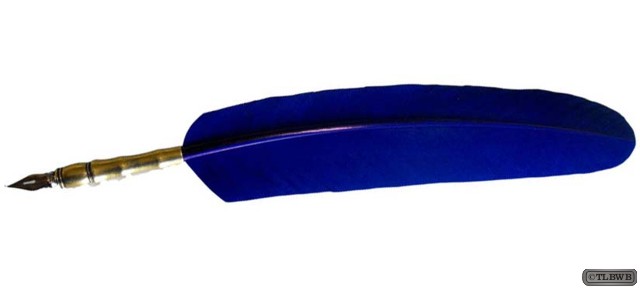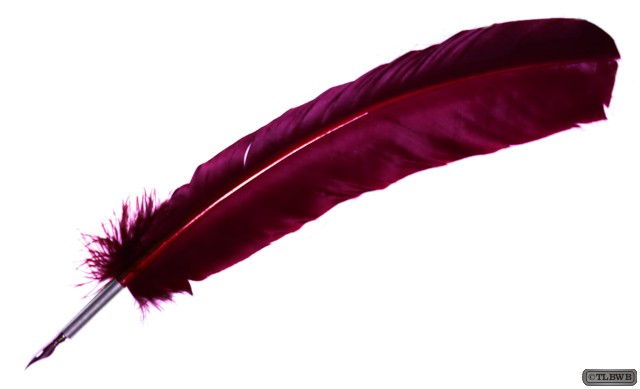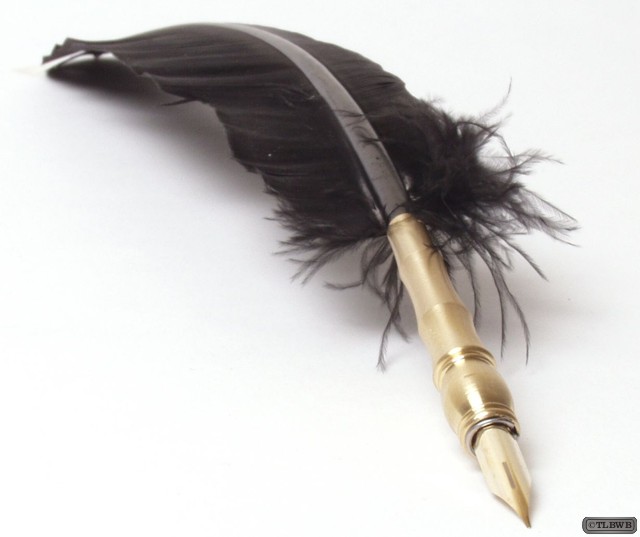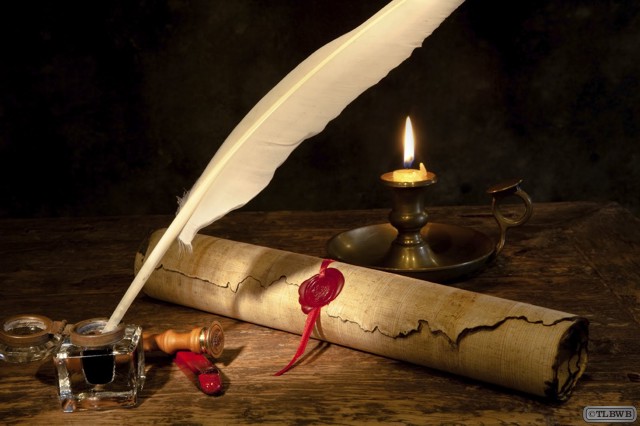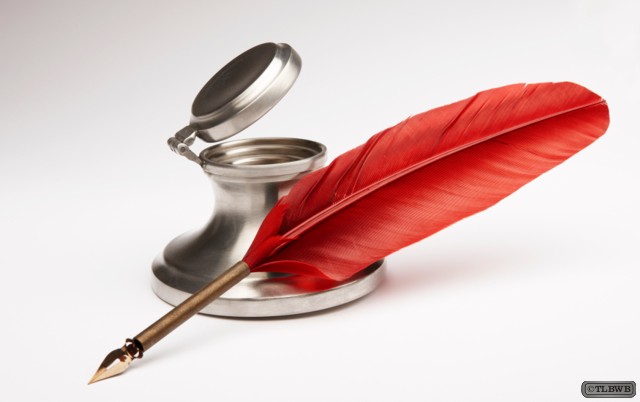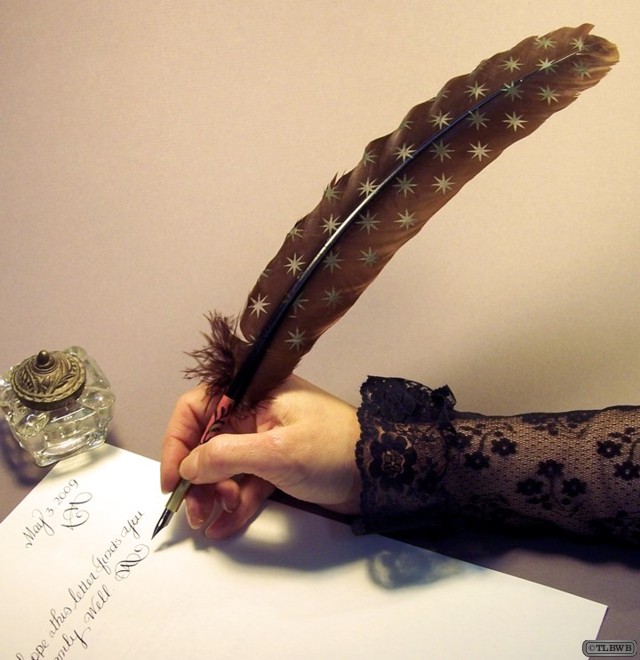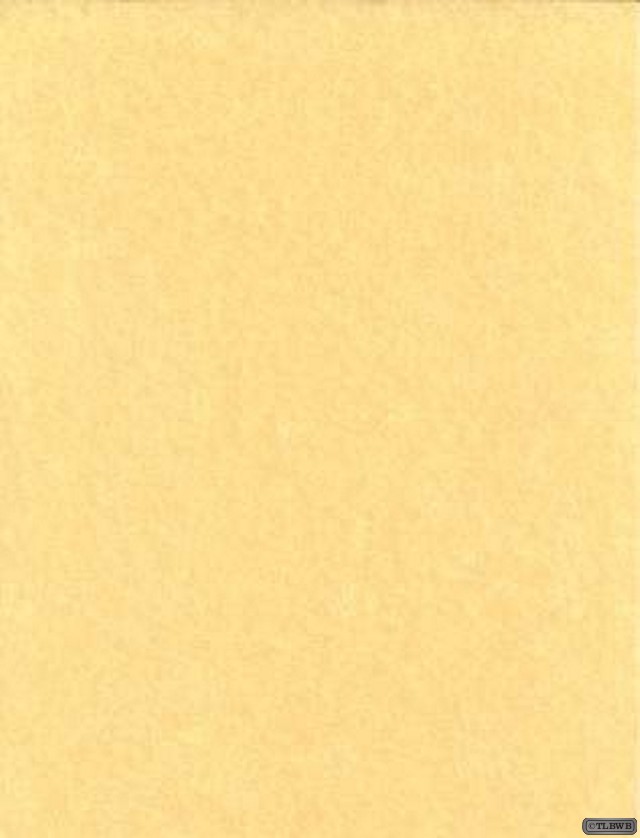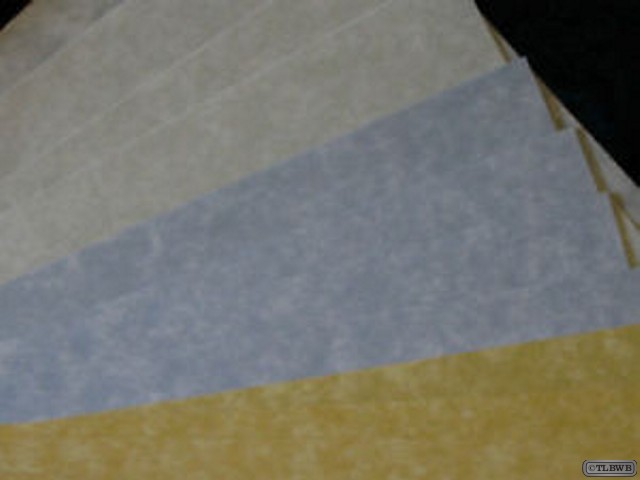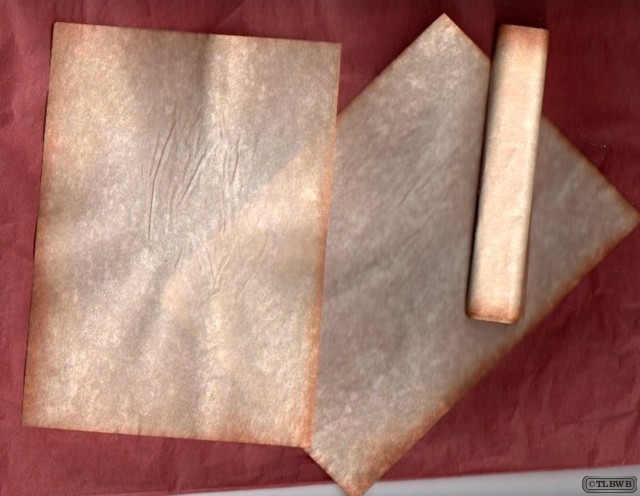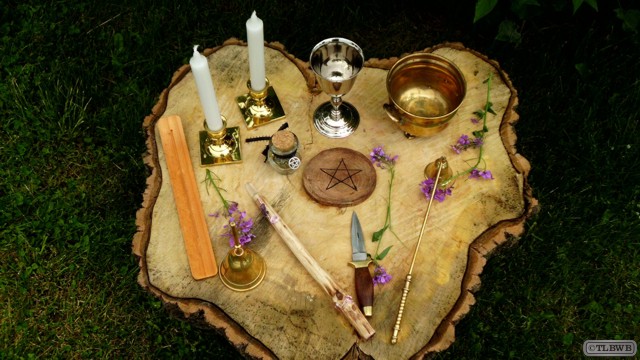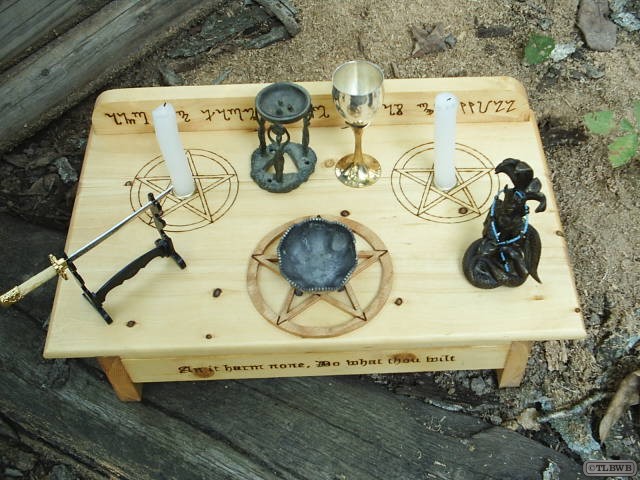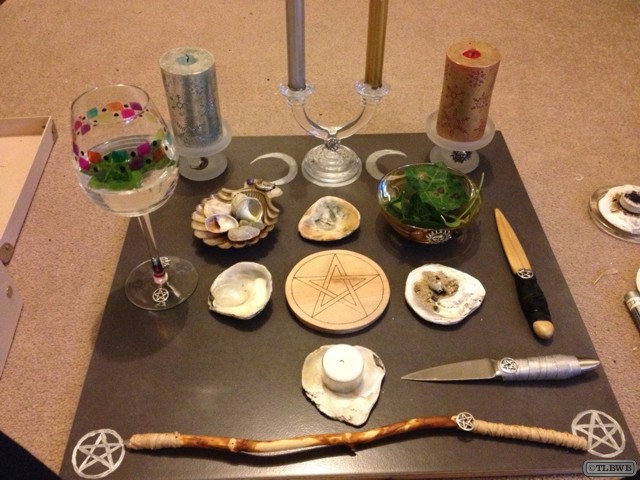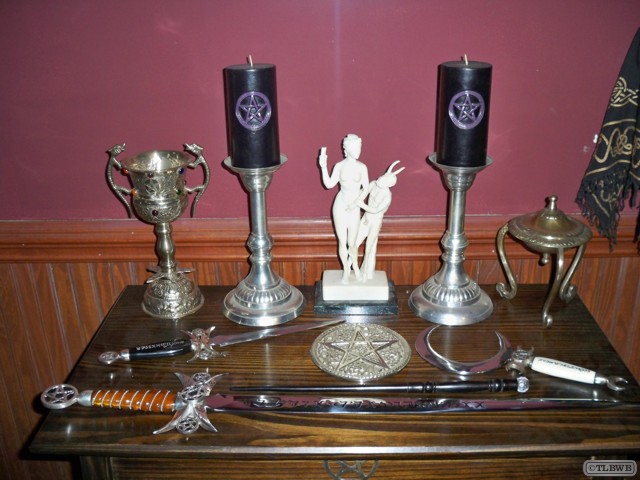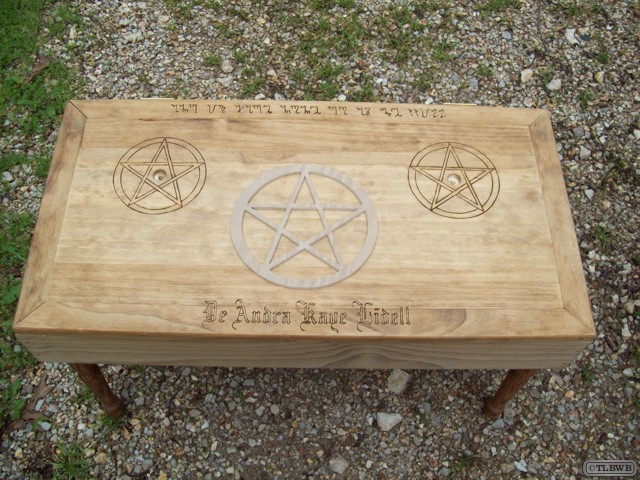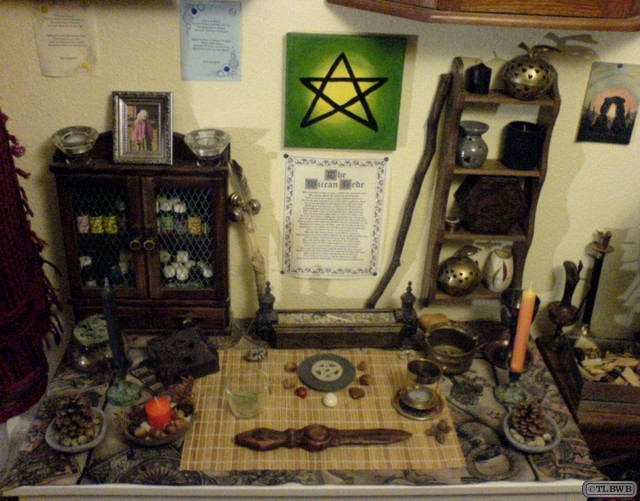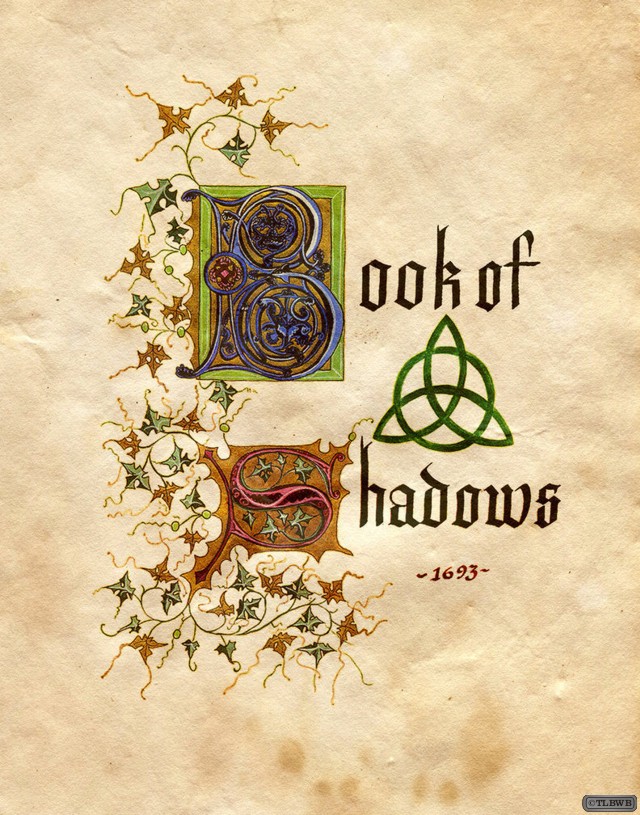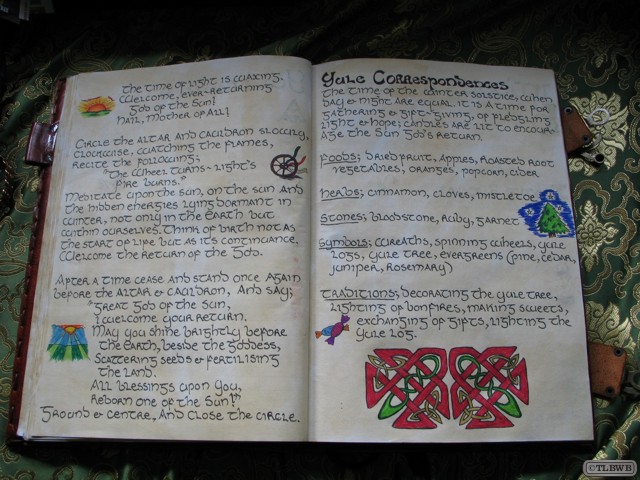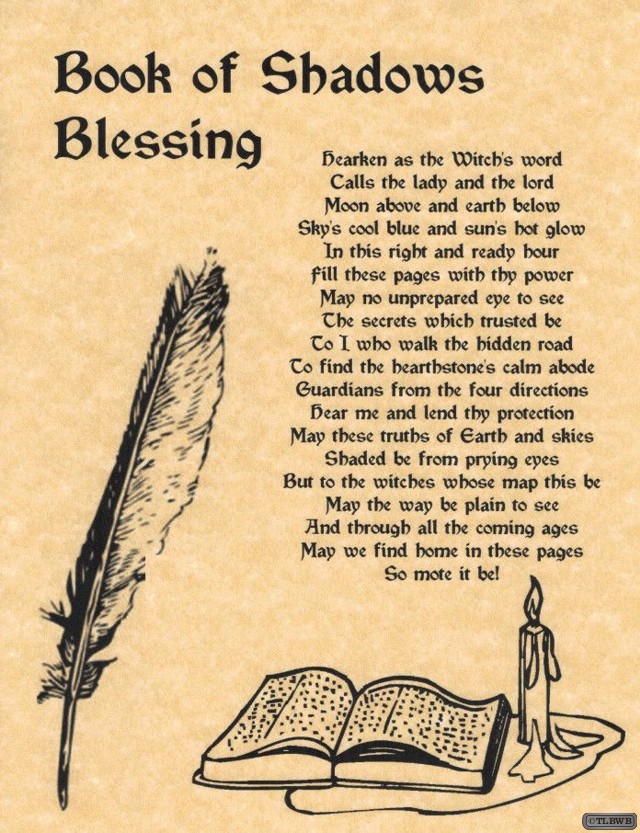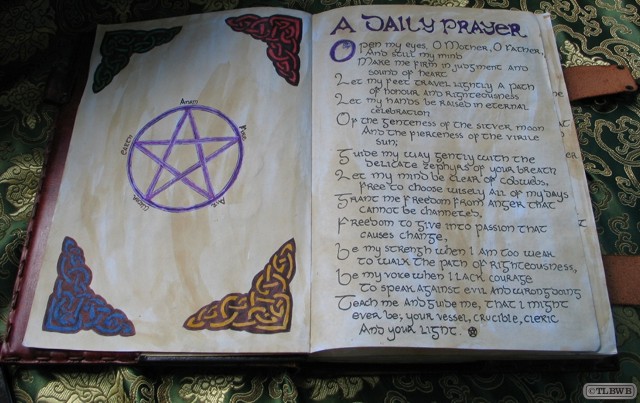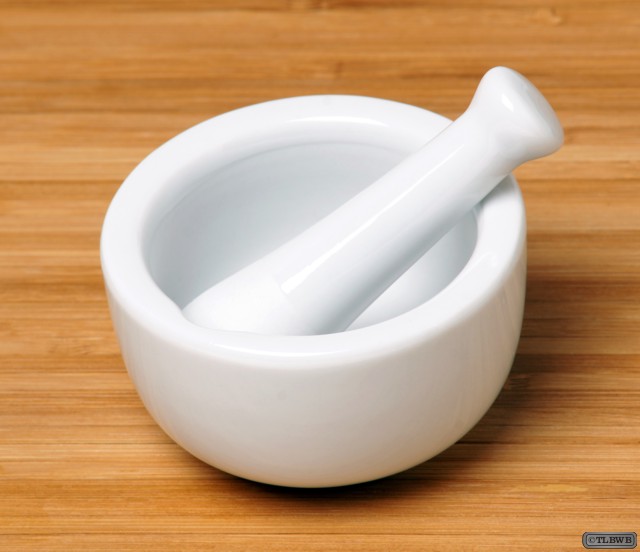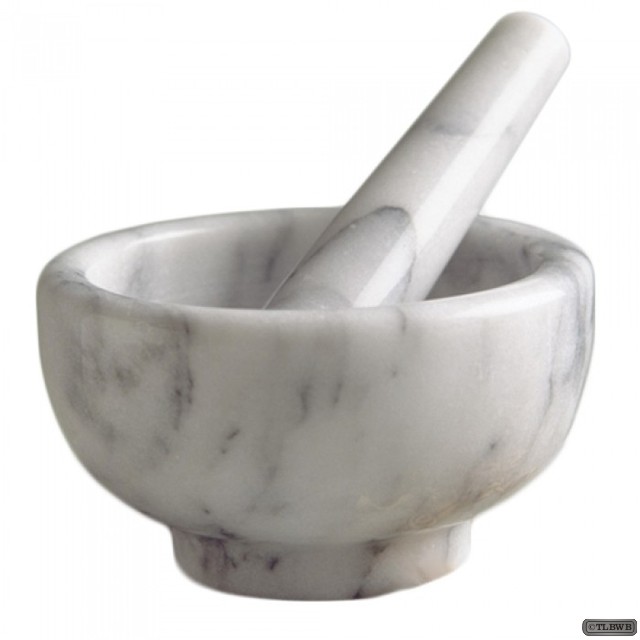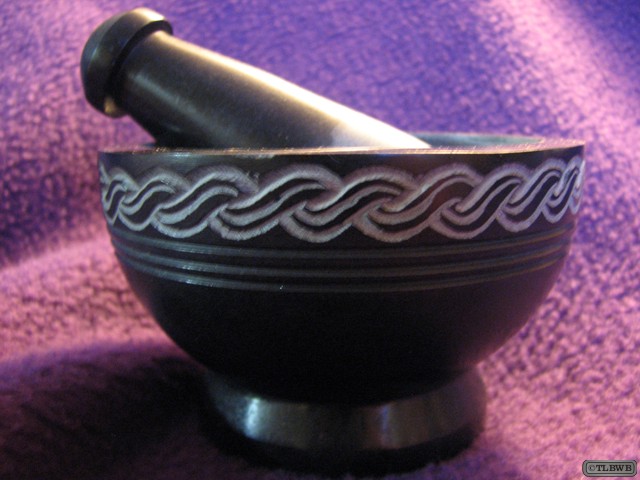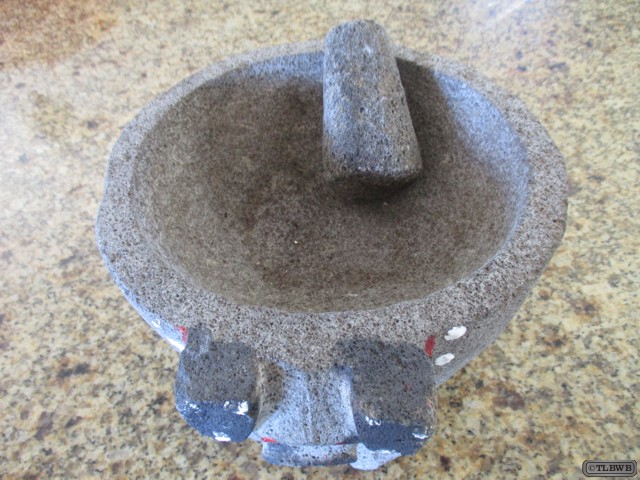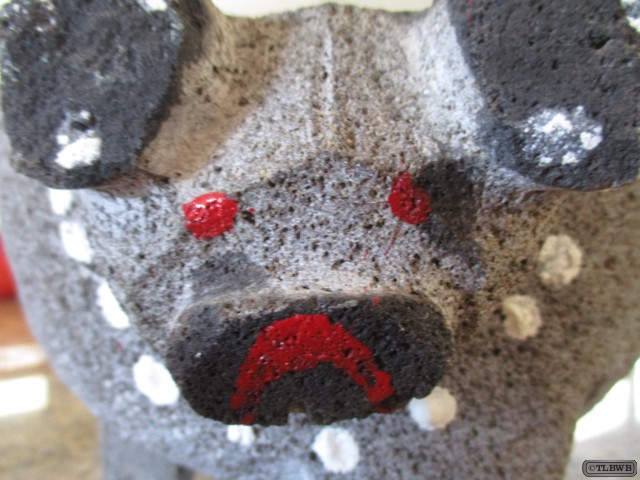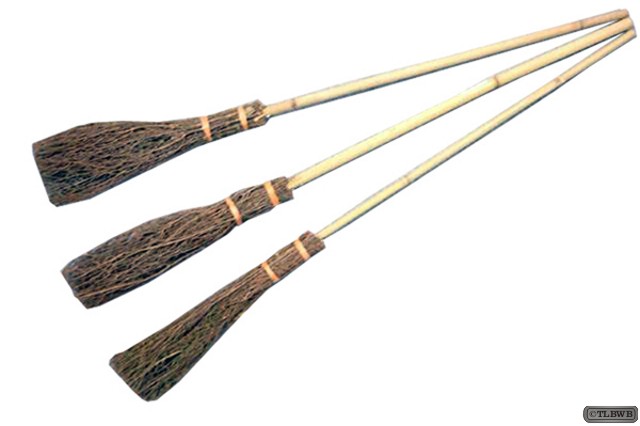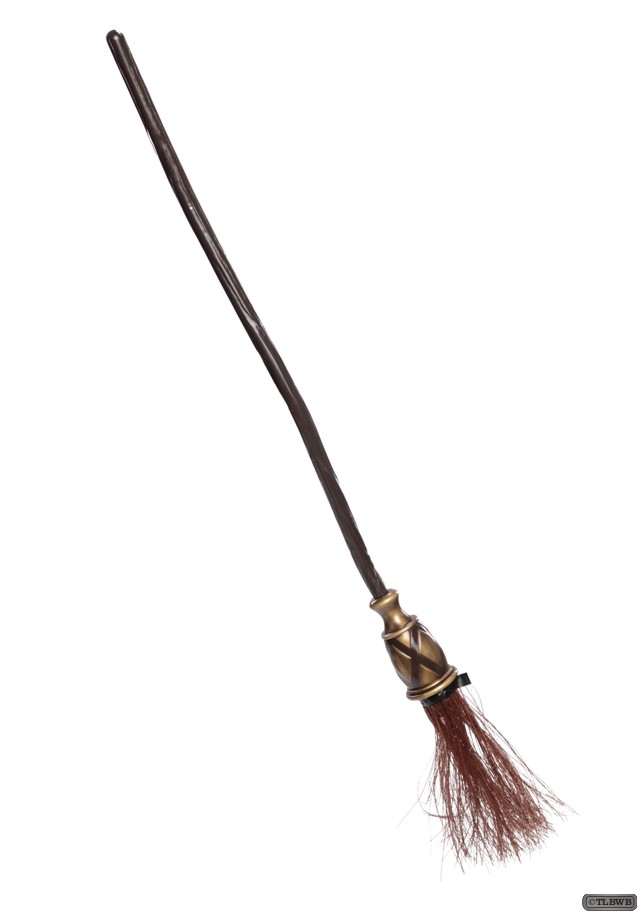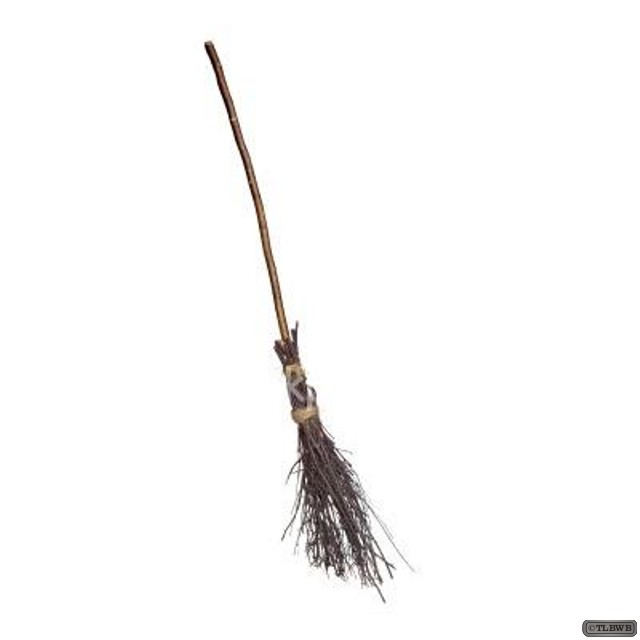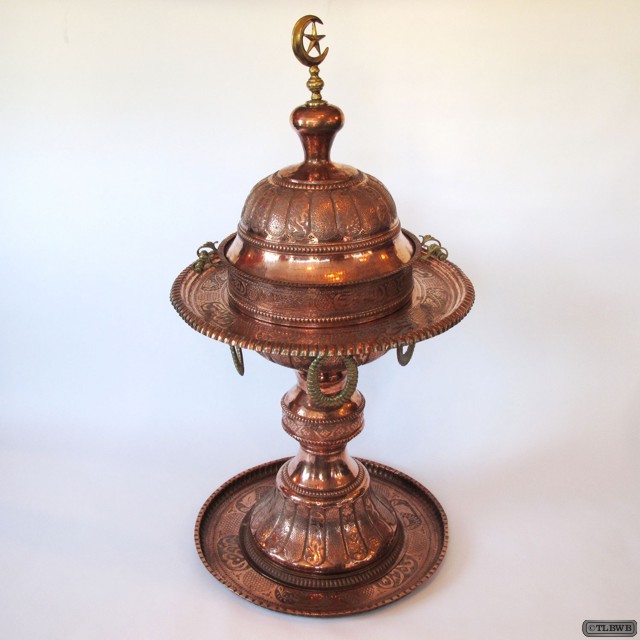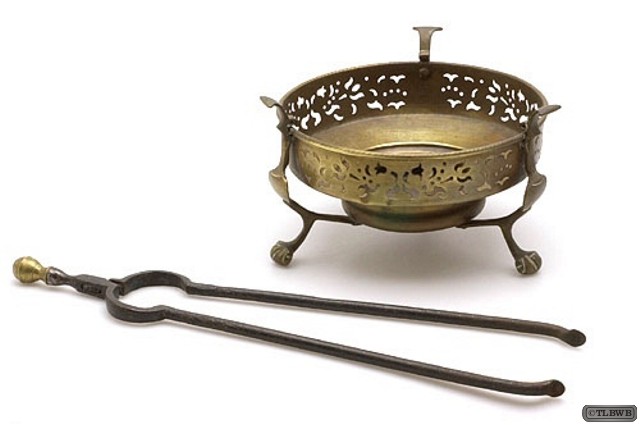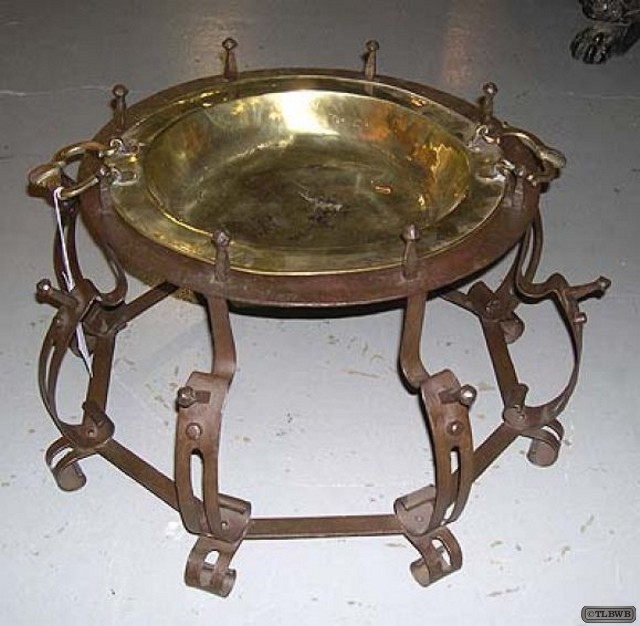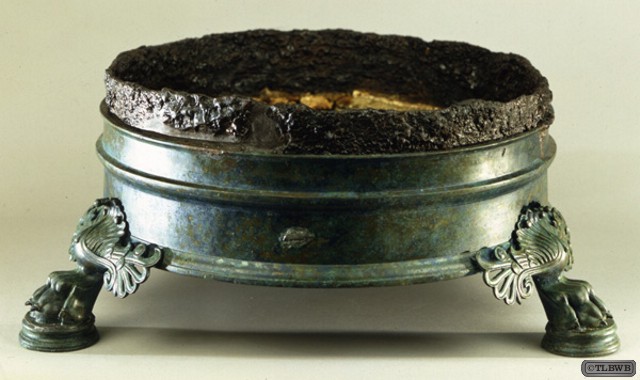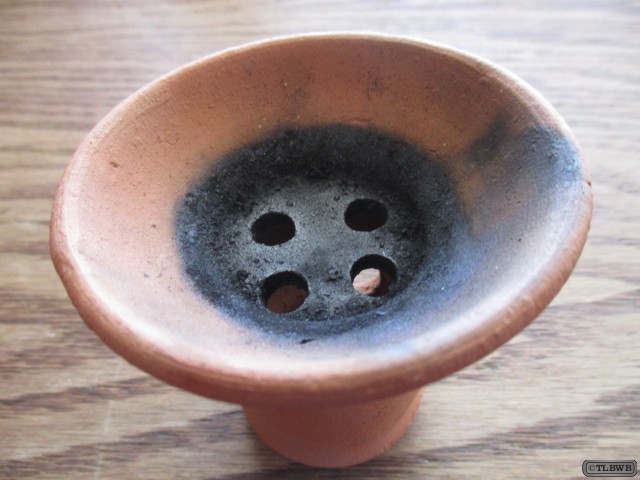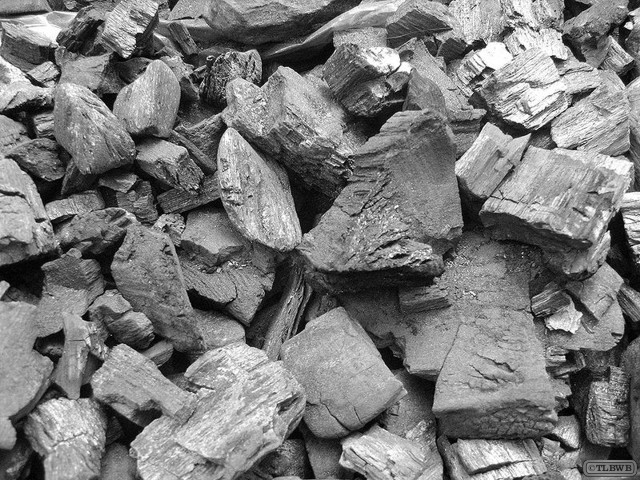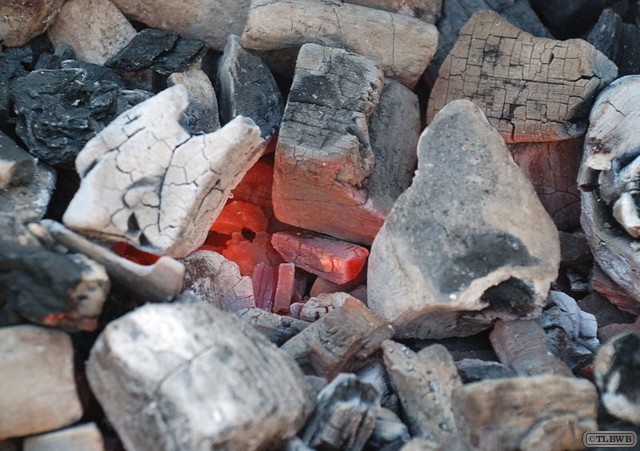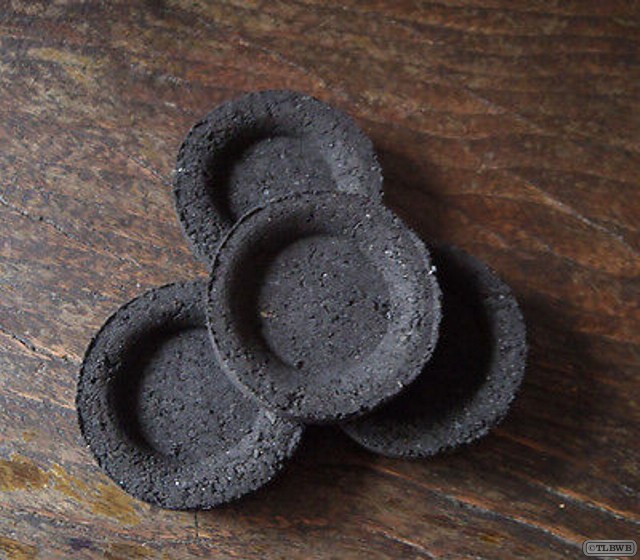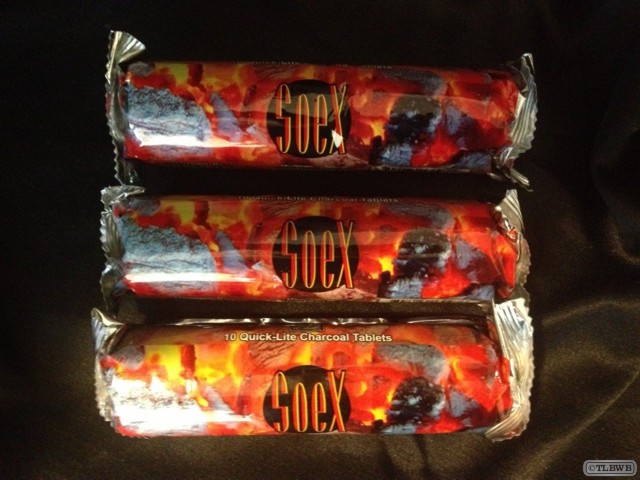LostBeardedWhite
A pendulum is a weight suspended from a pivot so that it can swing freely. When a pendulum is displaced sideways from its resting equilibrium position, it is subject to a restoring force due to gravity that will accelerate it back toward the equilibrium position. When released, the restoring force combined with the pendulum’s mass causes it to oscillate about the equilibrium position, swinging back and forth. The time for one complete cycle, a left swing and a right swing, is called the period. The period depends on the length of the pendulum, and also to a slight degree on the amplitude, the width of the pendulum’s swing.
Wiccan Pendulum
Pendulums are one of the oldest of divination tools and are a form of dowsing. In Europe the scientific use of a pendulum is called Radiesthesia and is a well accepted form of gaining information. They can be used for locating just about anything including water, gold, and oil. During the Vietnam war they were used by soldiers to locate underground mines and tunnels. In France doctors have used pendulums to help with diagnoses and many people have used them to predict the gender of their unborn babies. You can even use a pendulum on a map to discover a great place for a trip or a new place to live. Simply hold the pendulum over a map and ask “Is this the place?” Some pendulums come with small chambers that can be loaded with the substance that you are seeking such as water or gold. Loading the pendulum programs it to find that substance.
A pendulum is one of the simplest and easiest forms of divination. It’s a simple matter of Yes/No questions being asked and answered. Typically, most people use a crystal or stone, but you can use any object that’s got a bit of weight to it.
Charge Your Pendulum
To charge your pendulum, place it overnight in water or salt. Remember that some crystals will degrade in salt, so be sure to check before you do this. Another option is to leave the pendulum outside overnight in the moonlight.
Calibrate Your Pendulum
To calibrate your pendulum simply means you’re checking it to see how it’s working. To do this, hold it by the free end of the chain so that the weighted end is loose. Make sure you keep it perfectly still. Ask a simple Yes/No question to which you already know the answer is Yes, such as “Am I female?” or “Do I live in California?”
Keep your eye on the pendulum, and when it starts moving, note whether it goes side to side, forwards to backwards, or some other direction. This indicates your “Yes” direction.
Now, repeat the process, asking a question to which you know the answer is No. This will give you your “No” direction. It’s a good idea to do this a few times with different questions, so you can get a feel for how your pendulum responds to you. Some will swing horizontally or vertically, others swing in small or large circles, others don’t do a whole lot unless the answer is really important. Once you’ve calibrated your pendulum and gotten to know it a bit, you can use it for some basic divination.
The Lost Bearded White Brother
Ink is a liquid or paste that contains pigments or dyes and is used to color a surface to produce an image, text, or design. Ink is used for drawing or writing with a pen, brush, or quill. Thicker inks, in paste form, are used extensively in letterpress and lithographic printing.
Ink can be a complex medium, composed of solvents, pigments, dyes, resins, lubricants, solubilizers, surfactants, particulate matter, fluorescents, and other materials. The components of inks serve many purposes; the ink’s carrier, colorants, and other additives affect the flow and thickness of the ink and its appearance when dry.
History
Many ancient cultures around the world have independently discovered and formulated inks for the purposes of writing and drawing. The knowledge of the inks, their recipes and the techniques for their production comes from archaeological analysis or from written text itself.
The ink was first invented in India. The Indian inks used natural plant (plant dyes), and mineral inks based on such materials as graphite that were ground with water and applied with ink brushes. The best inks for drawing or painting on paper or silk are produced from the resin of the pine tree. They must be between 50 and 100 years old. The Chinese inkstick is produced with a fish glue, whereas Japanese glue is from cow or stag.
The process of making India ink was known in China as early as the middle of the 3rd millennium BC, during Neolithic China. India ink was first invented in China, although the source of materials to make the carbon pigment in India ink was later often traded from India, thus the term India ink was coined. The traditional Chinese method of making the ink was to grind a mixture of hide glue, carbon black, lampblack, and bone black pigment with a pestle and mortar, then pouring it into a ceramic dish where it could dry. To use the dry mixture, a wet brush would be applied until it reliquified. The manufacture of India ink was well-established by the Cao Wei Dynasty (220-265 AD). Indian documents written in Kharosthi with ink have been unearthed in Chinese Turkestan. The practice of writing with ink and a sharp pointed needle was common in early South India. Several Buddhist and Jain sutras in India were compiled in ink.
Wiccan Ink
Add power to your spells by writing them with magical ink!
Because these magical inks are made from only natural ingredients, separation may occur. This is normal. Please make sure to shake well before use.
Dragon’s Blood Ink
Color: Red
Good for protection, energy, and purification. Adds power to any spell, incantation, or other charm. Increases potency of your spells. Has strong banishing powers against negative influences, and will drive away negativity.
Dove’s Blood Ink
Color: Red
Good for love, romance, friendship, and peace. Add power to love spells. Thank your spiritual guides and helpers. Ignite romance and passion.
Bat’s Blood Ink
Color: Red
Good for domination, command, curses, and hexes. Great for summoning spirits. Good for binding spells. Also use for spells of mystery, darkness, and all things hidden.
Butterfly’s Blood Ink
Color: Golden Yellow
Good for change, inspiration, and expression. Helpful for calling on the element of air. Magical aid for artists, brings creativity. Aids in communication, for both the physical and spiritual realms. Once dry on your parchment, Butterfly’s Blood Ink is nearly invisible. Which makes this ink excellent for spell working that relies on the subconscious, or sigils.
Raven’s Blood Ink
Color: Copper Red
For healing, transformation, and mystery. Good for healing spells. Excellent to use in spells bringing about transformation, or spells to ease one’s mind when faced with a life transformation. Use this ink when you want to add an air of mystery to your spell workings.
Raven’s Feather Ink
Color: Dark Red
For commanding spells and spells to contact the dead. Good for summoning spirits, banishing spirits, and exorcisms. Use this ink to create your own “talking” boards for contacting spirits, or for mediums to write out their questions for the dead.
Lampblack Ink
Color: Black
Lampblack ink adds extra power to any spell. Particularly useful for wisdom and knowledge spells, making this an excellent ink for writing in a witch’s book of shadows. You can also charge Lampblack ink with specific intent by coordinating the color of the candle used to create the Lampblack soot.
Invisible Ink
Color: Invisible
Write on a piece of paper with lemon juice. When you want to read what has been written, warm the paper by candle light. (Don’t burn it!) The words will “magically” appear.
Alchemy Ink
Color: Blue
With lavender for transformation, change, dreams, imagination and fairie magic.
Wishes Ink
Color: Green
With sage for wishes, desires and magic related to the material plane.
Sweet Talk Ink
Color: Red
With rose for love, friendship, and relationship magic.
Vision Quest Ink
Color: Purple
With hyssop for clairvoyance, intuition, divination, and magic involving the psyche.
Monk’s Ink
Color: Black
For general magical and mundane use.
The Lost Bearded White Brother
A quill pen is a writing implement made from a moulted flight feather (preferably a primary wing-feather) of a large bird. Quills were used for writing with ink before the invention of the dip pen, the metal-nibbed pen, the fountain pen, and, eventually, the ballpoint pen. The hand-cut goose quill is rarely used as a calligraphy tool, because many papers are now derived from wood pulp and wear down the quill very quickly. However, it is still the tool of choice for a few professionals and provides an unmatched sharp stroke as well as greater flexibility than a steel pen.
In a carefully prepared quill the slit does not widen through wetting and drying with ink. It will retain its shape adequately and only requires infrequent sharpening and can be used time and time again until there is little left of it. The hollow shaft of the feather (the calamus) acts as an ink reservoir and ink flows to the tip by capillary action.
The strongest quills come from the primary flight feathers discarded by birds during their annual moult. Generally the left wing (it is supposed) is favored by the right-handed majority of writers because the feather curves away from the sight line, over the back of the hand. This is actually urban myth. The quill barrel is cut to six or seven inches in length, so no such consideration of curvature or ‘sight-line’ is necessary. Additionally, writing with the left-hand in the long era of the quill was discouraged, and quills were never sold as left and right-handed, only by their size and species.
The Lost Bearded White Brother
This calligraphy parchment paper has a fine surface texture that is excellent with inks. Specially designed for calligraphic projects. Parchment paper is ideal for invitations, certificates, stationery and student artwork. This collection of parchment-toned paper includes dozens of sheets in assorted tints, each with a smooth surface for even, fluid ink flow.
More durable than ordinary paper and imbued with a pale cream color, this heavy parchment pack is perfect for the rigors of spellcraft.
Use it in Journals if your pages are wearing out or you need to add some pages to it!!!
Write spells or Sabbats Recipes. This is Heavy Good Quality Parchment Paper.
Magical Uses:
This parchment can be used for many things including, creating your own spell work, spell magic for rituals to placed in your BOS, Book of shadows, for ceremonies & incantations & Scrolls. Also can be used a journal or diary pages.
This is True spell parchment not just colored paper or thick vellum board.
The Lost Bearded White Brother
A Wiccan altar is a “raised structure or place used for sacrifice, worship, or prayer”, upon which a Wiccan practitioner places several symbolic and functional items for the purpose of worshiping the God and Goddess, casting spells, and/or saying chants and prayers.
Altar Items
The altar is often considered a personal place where practitioners put their ritual items. Some practitioners may keep various religious items upon the altar, or they may use the altar and the items during their religious workings. According to Scott Cunningham, a popular Wiccan author, the left side of the altar should be considered the Goddess area; feminine or yonic symbols such as bowls and chalices, as well as Goddess representations and statues should be placed on the left. The right side is designated for the God; phallic symbols such as the athame and the wand are placed to the right side, as well as God statuary and his candle. The left and right associations vary according to personal preference, but the center area is almost always considered the “both” area, or the working area. In the center of the altar are kept the main symbols of the Wiccan faith, such as the pentacle.
Some Wiccans arrange their altars to represent all four elements and directions. In the North the earth element is represented; in the east is air, in the south is fire, and in the west water. These elements can be represented in various ways, but generally do not vary in elemental and directional correspondences. When placing items on an altar or when “calling on the elements” (a practice involving inviting the elements to be a part of the circle and lend their power) a practitioner will move deosil (clockwise or sunwise) and when dismissing the elements they will move widdershins (counter-clockwise).
Some of the items represent the Earth’s four elements, but elements may be represented more literally, with gems, salt, water, plant material, insect casings, etc.
Opening Of Circle
Walking clockwise from East.
By the air that is her breath
By the fire that is her bright spirit
By the living waters of her womb
And by the earth that is her body
The circle is cast,
Tie the knot of the circle
So Mote It Be!
Open The Circle
First cut the knot.
Walking counterclockwise from East.
By the air that is her breath
By the earth that is her body
By the living waters of her womb
And by the fire that is her bright spirit
The circle is open but not unbroken.
May the joy of the Goddess live in our hearts
Merry Meet,
Merry Part,
And Merry Meet Again!
The Lost Bearded White Brother
Despite popular movies and television shows, there is no one single book of shadows. A book of shadows, or BOS, is a Wiccan or Pagan’s notebook of information. It usually contains spells, rituals, correspondence charts, information about the rules of magic, invocations, myths and legends of various pantheons, etc. Sometimes information in a BOS is passed along from one Wiccan to another (and in a coven setting, there may be a coven BOS as well as individual members’ books), but you can create your own with a little bit of effort. A BOS is a very personal thing, and should contain the information you find most important.
How To Make a Book of Shadows
The Book of Shadows (BOS) is used to store information you’ll need in your magical tradition, whatever it may be. Many Pagans and Wiccans feel a BOS should be handwritten, but some use a computer to store information as well. Bear in mind that a BOS is considered a sacred tool, which means it is an item of power that should be consecrated with all of your other magical tools. In many traditions, it is believed you should copy spells and rituals into your BOS by hand – this will not only transfer energy to the writer, but it also helps you to memorize the contents.
Make sure you write legibly enough that you’ll be able to read your notes during a ritual!
To make your Book of Shadows, begin with a blank notebook. A popular method is to use a three-ring binder so items can be added and rearranged as needed. If you use this style of BOS, you can use sheet protectors as well, which is great for preventing candle wax and other ritual drippings from getting on the pages! Whatever you select, your title page should include your name. Make it fancy or simple, depending on your preference, but remember that the BOS is a magical object and should be treated accordingly. Many witches simply write, “The Book of Shadows of [your name]” on the front page.
What format should you use? Some witches are known to create elaborate Books of Shadows in secret, magical alphabets. Unless you’re fluent enough in one of these systems that you can read it without having to check notes or a chart, stick with your native language. While a spell looks beautiful written out in flowing Elvish script or Klingon lettering, the fact is that it’s just hard to read unless you’re an Elf or a Klingon.
When it comes to the contents of your personal BOS, there are a few sections that are nearly universally included.
Laws of your coven or tradition:
- Believe it or not, magic has rules. While they may vary from group to group, it’s a really good idea to keep them at the front of your BOS as a reminder of what constitutes acceptable behavior and what doesn’t. If you’re part of an eclectic tradition that doesn’t have written rules, or if you’re a solitary witch, this is a good place to write down what YOU think are acceptable rules of magic. After all, if you don’t set yourself some guidelines, how will you know when you’ve crossed over them? This may include a variation on the Wiccan Rede, or some similar concept.
A dedication:
- If you’ve been initiated into a coven, you may want to include a copy of your initiation ceremony here. However, many Wiccans dedicate themselves to a God or Goddess long before they become part of a coven. This is a good place to write out who you are dedicating yourself to, and why. This can be a lengthy essay, or it can be as simple as saying, “I, Willow, dedicate myself to the Goddess today, June 21, 2007.”
Gods and Goddesses:
- Depending on what pantheon or tradition you follow, you may have a single God and Goddess, or a number of them. Your BOS is a good place to keep legends and myths and even artwork concerning your Deity. If your practice is an eclectic blend of different spiritual paths, it’s a good idea to include that here.
Correspondence tables:
- When it comes to spellcasting, correspondence tables are some of your most important tools. Phases of the moon, herbs, stones and crystals, colors – all have different meanings and purposes. Keeping a chart of some sort in your BOS guarantees that this information will be at the ready when you really need it. If you have access to a good almanac, it’s not a bad idea to record a years’ worth of moon phases by date in your BOS.
Sabbat rituals:
- The Wheel of the Year includes eight holidays for most Wiccans and Pagans, although some traditions do not celebrate all of them. Your BOS can include rituals for each of the Sabbats. For example, for Samhain you may wish to create a rite that honors your ancestors and celebrates the end of the harvest, while for Yule you may want to write down a celebration of the winter Solstice. A Sabbat celebration can be as simple or complex as you wish.
Other rituals:
- If you’ll be celebrating each full moon, you’ll want to include an Esbat rite in your BOS. You can use the same one each month, or create several different ones tailored to the time of year. You may also wish to include sections on how to cast a circle and Drawing Down the Moon, a rite that celebrates the invoking of the Goddess at the time of the full moon. If you’ll be doing any rites for healing, prosperity, protection, or other purposes, be sure to include them here.
Herbs:
- Ask any experienced Pagan or Wiccan about a specific herb, and chances are good that they’ll expound on not only the magical uses of the plant but also the healing properties and history of use. Herbalism is often considered the core of spellcasting, because plants are an ingredient that people have used for literally thousands of years. Put together a section in your BOS for herbs and their uses. Remember, many herbs should not be ingested, so it’s important to research thoroughly before you take anything internally.
Divination:
- If you’re learning about Tarot, scrying, astrology, or any other form of divination, keep information in here. When you experiment with new methods of divination, keep a record of what you do and results you see in your Book of Shadows.
Sacred texts:
- While it’s fun to have a bunch of new shiny books on Wicca and Paganism to read, sometimes it’s just as nice to have information that’s a little more established. If there is a certain text that appeals to you, such as The Charge of the Goddess, an old prayer in an archaic language, or a particular chant that moves you, include it in your Book of Shadows.
Magical recipes:
- There’s a lot to be said for “kitchen witchery,” because for many people, the kitchen is the center of hearth and home. As you collect recipes for oils, incense, or herb blends, keep them in your BOS. You may even want to include a section of food recipes for Sabbat celebrations.
Spell workings:
- Some people prefer to keep their spells in a separate book called a grimoire, but you can also keep them in your Book of Shadows. It’s easier to keep spells organized if you divide them up by purpose: prosperity, protection, healing, etc. With each spell you include – particularly if you write your own rather than using someone else’s ideas – make sure you also leave room to include information on when the working was performed and what the outcome was.
The biggest dilemma with any Book of Shadows is how to keep it organized. You can use tabbed dividers, create an index at the back, or if you’re really super-organized, a table of contents in the front. As you study and learn more, you’ll have more information to include – this is why the three-ring binder is such a practical idea. Some people choose instead to use a simple bound notebook, and just add to the back of it as they discover new items.
Keep in mind that as our technology is constantly changing, the way we use it does too – there are people who keep their BOS completely digitally on a flash drive, their laptop, or even stored virtually to be accessed by their favorite mobile device. A BOS pulled up on a smart phone is no less valid than one copied by by hand in ink onto parchment.
You may want to use one notebook for information copied from books or downloaded off the Internet, and another for original creations. Regardless, find the method that works best for you, and take good care of your Book of Shadows. After all, it’s a sacred object and should be treated accordingly!
Tips:
- If you find a rite, spell or piece of information somewhere else, be sure to note down the source. It will help you keep organized, and you’ll start to recognize patterns in authors’ works.
- Add a section that includes books you’ve read, as well as what you thought of them. This way, when you get a chance to share information with others, you’ll remember what you’ve read.
- Want to hear what other readers have done with their BOS? Be sure to check in over at our Readers Respond page!
The Lost Bearded White Brother
A Pestle and Mortar is a device used since ancient times to prepare ingredients or substances by crushing and grinding them into a fine paste or powder. The mortar is a bowl, typically made of hard wood, ceramic or stone. The pestle is a heavy club-shaped object, the end of which is used for crushing and grinding. The substance to be ground is placed in the mortar and ground, crushed or mixed using the pestle.
Mortars and pestles have been used in cooking up to the present day; they are frequently also associated with the profession of pharmacy due to their historical use in preparing medicines. They can also be used in masonry and in other types of construction.
Molcajete
A Molcajete (from Nahuatl mulcazitl) is a stone tool, the traditional Mexican version of the mortar and pestle, similar to the South American batan, used for grinding various food products. The molcajete (also known as an El Pestle) was used by pre-Hispanic Mesoamerican cultures, including the Aztec and Maya, stretching back several thousand years. Traditionally carved out of a single block of vesicular basalt, molcajetes are typically round in shape and supported by three short legs. They are frequently decorated with the carved head of an animal on the outside edge of the bowl, giving the molcajete the appearance of a short, stout, three-legged animal. The pig is the most common animal head used for decoration of this type. The matching hand-held grinding tool, known as a tejolote (from Nahuatl texolotl), is also made of the same basalt material.
Molcajetes are used to crush and grind spices, and prepare salsas and guacamole. The rough surface of the basalt stone creates a superb grinding surface that maintains itself over time as tiny bubbles in the basalt are ground down, replenishing the textured surface.
The new basalt molcajete needs to be “broken in” because small grains of basalt can be loosened from the surface when it is first used and this will give an unpleasant gritty texture to the first few items prepared in it. A simple way to do the initial “seasoning” is to grind white rice in the molcajete, a handful at a time. When the crushed rice flour has no visible grains of basalt in it, the molcajete is ready to use. Some rice flour may remain ground into the surface of the molcajete; this will cause no problem.
Wiccan
The mortar and pestle set is a handy tool that many Pagans – and other folks – use for grinding and blending herbs and dried ingredients together during a magical working. The set consists of two pieces – the mortar, which is typically a bowl, although it can be flat as well, and the pestle, which is held in the hand.
Using the other, hold the pestle. By pressing the pestle down into the mortar, and moving it back and forth, you can grind and blend the herbs or other items for spellwork. This is a great tool to use if you’re using dried herbs which may be in large pieces. It also works nicely with fresh herbs, because the grinding motion of the pestle will help release essential oils from the leaves.
Mortar and pestle sets come in a variety of materials, and you can usually find one in your local kitchen supply store. They are available in porcelain, wood, marble, and even metal. In South America, a large porous stone called a molcajete is used to grind grain and vegetables – if you’re working with large items such as corn or wheat, consider using one of these instead of the smaller mortar and pestle.
To activate your Mortar for magical purposes place your pestle into the mortar and move in a clockwise direction saying:
- seed to earth
- earth to root
- root to sprout
- sprout to leaf
- leaf to bud
- bud to flower
- flower to fruit
- fruit to seed
- seed to earth
Now hold the Mortar between your hands and say:
- womb at the center of all things,
- shaper, transformer, and birther of all,
- hold or free spirits that come to the call,
- life-giver, death-taker,
- stone carver, dream maker,
- I turn the wheel, then to show
- and what I spin, it now is so.
To activate the pestle, set it upright in the mortar speak these words:
- tree at the center of all things,
- tower from where enchantment sings,
- thresher, dream churner, joiner of all,
- sound for the spirits to come at my call.
The Lost Bearded White Brother
Broom
A broom is a cleaning tool consisting of usually stiff fibers (often made of materials such as plastic, hair, or corn husks) attached to, and roughly parallel to, a cylindrical handle, the broomstick. It is thus a variety of brush with a long handle. It is commonly used in combination with a dustpan.
Magic
In the context of witchcraft, broomstick is likely to refer to the broom as a whole, known as a Besom. The first known reference to witches flying on broomsticks dates to 1453, confessed by the male witch Guillaume Edelin. The concept of a flying ointment used by witches appears at about the same time, recorded in 1456.
The Métis people of Canada have a broom dancing tradition. There are broom dancing exhibitions where people show off their broom dancing skills. The lively broom dance involves fast footwork and jumping.
Besom
Besom is a dialectal or historical word for what is now known as a broom, a household implement used for sweeping. The term “besom” is now mostly reserved for a “traditionally constructed” broom, made from a bundle of twigs tied to a stouter pole. The twigs used could be broom (i.e. Genista, whence the modern name “broom” for the tool), heather or similar. The song “Buy Broom Buzzems” from Northern England refers to both types of twig. From the phrase broom besom the more common broom comes.
Description
As a result of its construction around a central pole, the brush of the besom is rounded instead of flat. The bristles can be made of many materials including, but not limited to straw, herbs, or twigs. Traditionally the handle is of hazel wood and the head is of birch twigs. Modern construction uses bindings of wire and string (instead of the traditional split withy) and the head is secured by a steel nail instead of a wooden dowel.
In Wicca
A besom is a flight tool used in Wicca. A traditional Wiccan besom is an Hawthorn stave handle with bristles made from birch twigs. These twigs are tied on using thin pieces of willow wood. It is used to cleanse the ritual area before circle casting. As a tool, the besom is usually thought of as masculine in nature due to its phallic shape and symbolism. However the besom’s components are of both masculine and feminine orientation. The handle, an ash stave, is masculine in nature while the birch used for the bristles is thought of as feminine in nature. The besom is thought to be involved with fairies.
The besom is an important part of Wiccan handfasting ceremonies in some traditions. The couple jump over the besom during the ceremony. Alternatively, the couple may jump over a small bonfire.
The Lost Bearded White Brother
A brazier is a container for fire, generally taking the form of an upright standing or hanging metal bowl or box. Used for burning solid fuel, braziers principally provide heat and light, but may also be used for cooking and cultural rituals. Braziers have been recovered from many early archaeological sites, for example the Nimrud brazier recently excavated by the Iraqi National Museum, which dates back to at least 824 BCE.
History
Braziers are mentioned in the Bible. The Hebrew word for brazier is of Egyptian origin, suggesting an invention imported from Egypt. The only reference to it in the Bible is in Jeremiah 36:22-23, where braziers heat the winter palace of King Jehoiakim. In some churches a brazier is used to create a small fire, called new fire, which is then used to light the Paschal candle during the Easter Vigil.
The Roman Emperor Jovian was poisoned by the fumes from a brazier in his tent in CE 364, ending the line of Constantine. But despite the risks associated with burning charcoal on open fires, braziers were widely adopted as a source of domestic heat, particularly in the Spanish-speaking world. Fernando de Alva Cortés Ixtlilxochitl notes that the Tepanec Tlatoani in New Spain slept between two braziers because he was so old he produced no natural heat. In many areas they used to be considered healthier than fireplaces and chimneys, and continued to be one of the primary means of heating houses in Spain until the early 20th century. Gerald Brenan described the widespread habit in Spain in the 1920s of placing a brazier beneath a cloth-covered table to keep the legs and feet of the family warm on winter evenings.
When burned moist, rose and grapevine trimmings produce a pungent, sweet-smelling smoke, and make very good charcoal. When the charcoal fumes became overbearing, however, aromatics (lavender seeds, orange peel) were sometimes added to the embers in the brazier. A brazier used exclusively for burning aromatics (incense) is known as a censer or thurible.
A brazier holds a base layer of charcoal, over which loose incense can be sprinkled, and will produce more copious smoke than an open censer. A ventilated cover is common on brazier-styled censers, especially if you happen to find a Far Eastern design.
The Lost Bearded White Brother
Charcoal is a light, black residue, consisting of carbon and any remaining ash, obtained by removing water and other volatile constituents from animal and vegetation substances. Charcoal is usually produced by slow pyrolysis, the heating of wood or other substances in the absence of oxygen (see char and biochar). It is usually an impure form of carbon as it contains ash; however, sugar charcoal is among the purest forms of carbon readily available, particularly if it is not made by heating but by a dehydration reaction with sulfuric acid to minimise the introduction of new impurities, as impurities can be removed from the sugar in advance. The resulting soft, brittle, lightweight, black, porous material resembles coal.
Wiccan Charcoal
Long-burning, easy lighting charcoal tablets for use with incense burners, resin incenses, and powder incenses. Packaged in foil tubes, well sealed against moisture & dust. Charcoal for ritual and incense burning is a must have. Traditionally used in churches to burn incense within their services, you can use these self-igniting disks for your own purposes. Do you prefer loose or resin-type scents and smokes? Then these briquettes are convienent items to have in your witch’s bag! Our charcoal and charcoal accessories are sure to provide everything you need in your special and everyday practice.
Historically used as an antidote to poisoning – it actually absorbs the poisons – activated charcoal is great for removing toxins, both psychic and physical. In this manner, it works very well for purification rituals. It is known for its cleansing and protective abilities and is used to render a harmful situation neutral. It is also a commonly used incense ingredient to aid in burning.
How to use charcoal discs:
- You will need a heat proof plate or dish.
- Charcoal disc.
- Using a pair of tweezers or similar hold the charcoal disc, as they tend to light better this way I have found. (please do not use your fingers)
- Hold the flame to the edge of the charcoal disc, the disc will ignite and start to spark across the surface.
- Place the charcoal disc, well side up, onto your heatproof dish. Wait about 3 mins for your charcoal disc to heat up, you will see it turning grey.
- Now you are ready to add your incense to the well of the disc.
Charcoal discs get very hot so never hold directly when lighting. Always make sure the disc is completely cold before disposing of. Keep away from children and pets. Never leave unattended.
The Lost Bearded White Brother
